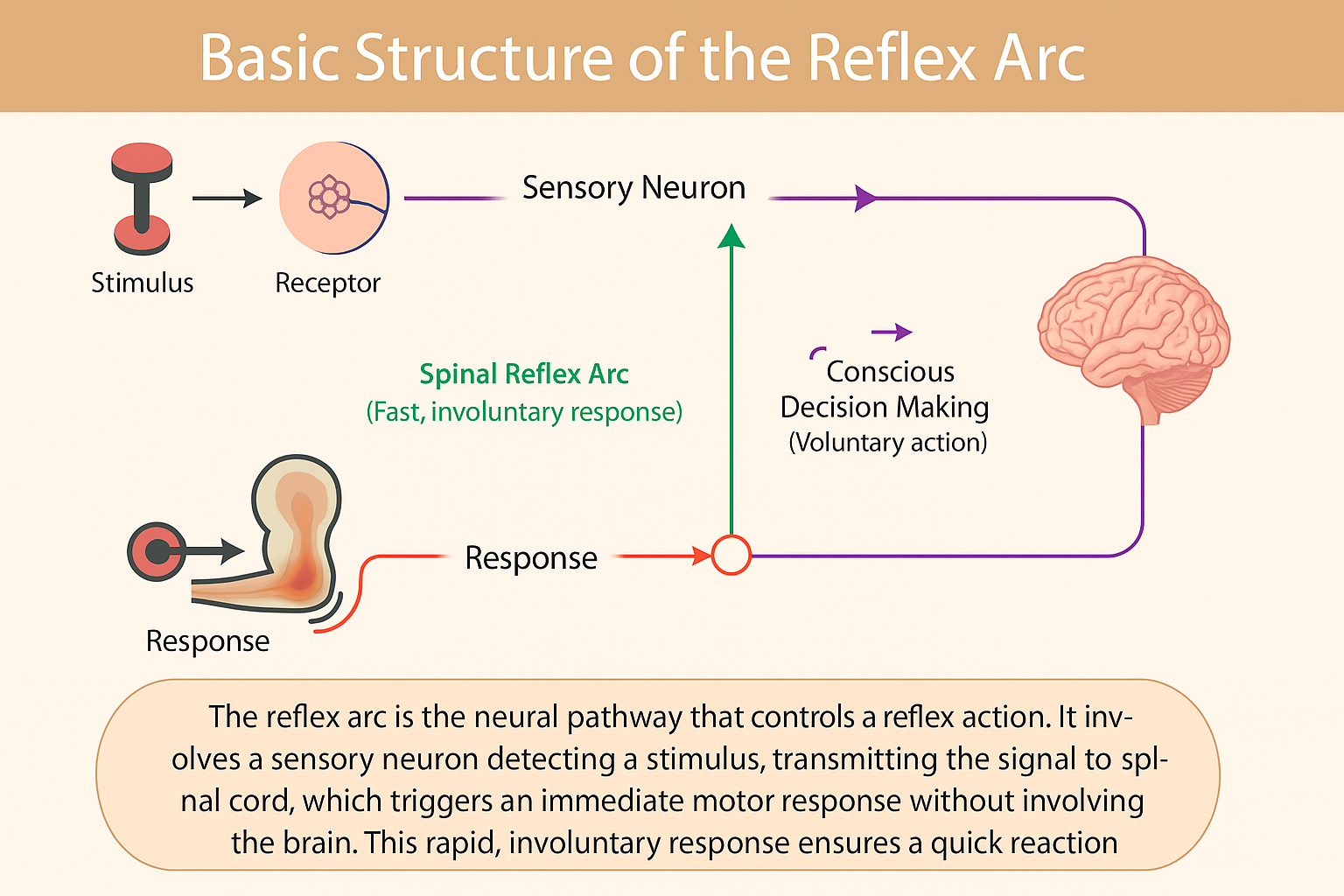⚡ The Reflex Arc: Fast, Focused, and MCAT-Tested
Whether you're dodging a falling object or jerking your hand away from a hot stove, reflexes are your body’s first responders. But more than that, the reflex arc is a high-yield MCAT concept that merges neurobiology, physiology, and behavior into one clean pathway.
In this blog, we’ll use a KOTC proprietary visual to break down the basic structure of the reflex arc and explain how your nervous system keeps you safe — often without even involving your brain.
🧠 How the Reflex Arc Works (Step-by-Step)
Let’s decode the visual and walk through the flow:
1. Stimulus + Receptor
A physical trigger (heat, pressure, pain) is detected by a receptor.
This information is immediately passed along a sensory neuron.
2. Sensory Neuron Transmission
The sensory neuron carries the signal to the spinal cord.
Think of it as the body’s alert system — no thinking required.
3. Spinal Reflex Arc (Involuntary)
Instead of waiting for the brain, the spinal cord processes the signal.
A motor neuron is activated, triggering an immediate reaction (e.g., muscle contraction).
This is a fast, involuntary response to prevent injury.
4. Effector + Response
The effector (usually a muscle) receives the motor command and reacts instantly.
You yank your hand back before you consciously process what happened.
5. Conscious Processing (Optional)
The signal still reaches the brain, allowing you to consciously understand and learn from the event.
This delayed response leads to voluntary action or decision-making.
🧬 MCAT Integration: Why This Is Testable
The reflex arc ties into several MCAT disciplines:
| Section | Relevant Concept |
|---|---|
| Biology | Nervous system structure and function |
| Psychology/Sociology | Sensory perception, neural processing |
| Biochemistry | Neurotransmitters in synaptic signaling |
| Physiology | Muscle response, neuron pathways |
You might be asked to:
Differentiate between voluntary and involuntary responses.
Recognize pathway components like sensory vs. motor neurons.
Apply reflex arc logic in experimental setups or behavioral scenarios.
💡 KOTC Study Hack
🔁 Mnemonic: Some Say Marry Money, But My Brother Says Big Brains Matter More.
Use it to remember sensory (S), motor (M), and both (B) neuron types in cranial nerves — an indirect tie-in to reflex arc thinking.
🧩 Quick Recap Table
| Reflex Arc Component | Function |
|---|---|
| Stimulus + Receptor | Detects environmental change and activates sensory neurons |
| Sensory Neuron | Transmits signal to spinal cord |
| Interneuron | Processes input and relays motor response (if present) |
| Motor Neuron | Delivers motor command to the effector (muscle) |
| Effector | Executes the physical response |
| Brain | Processes signal later for conscious understanding or voluntary response |
🧠 Science in Action
The reflex arc is a brilliant example of how the body prioritizes survival through speed. It ensures a fast reaction to danger, bypassing slow decision-making to act instantly.
Understanding this pathway gives you an edge on the MCAT and builds your clinical intuition for neurology and emergency medicine.
🧠 Study Better with KOTC
With KOTC’s adaptive science platform, you can:
Review 1000+ medical science visuals
Practice MCQs with explanations
Compete with peers via multiplayer quizzes
Track mastery with our custom homepage dashboard
📲 Start mastering the curve for free:
kingofthecurve.org/free-lifetime
Frequently Asked Questions (FAQs)
-
Aim for 4-6 focused hours, ensuring you incorporate breaks to avoid burnout.
-
Practice mindfulness techniques, take practice exams under realistic conditions, and maintain a balanced lifestyle.
-
Set short-term goals, seek support from mentors, and reward yourself for small achievements.
-
Regular exercise improves focus, reduces stress, and enhances overall mental clarity.
-
KOTC offers personalized learning tools, gamification features, and adaptive question banks to help students stay on track without burnout.


